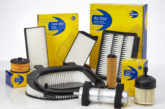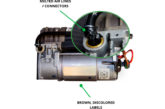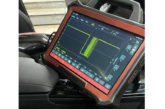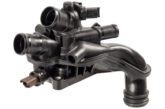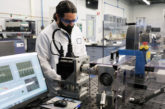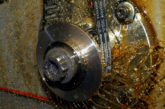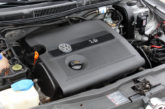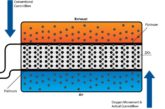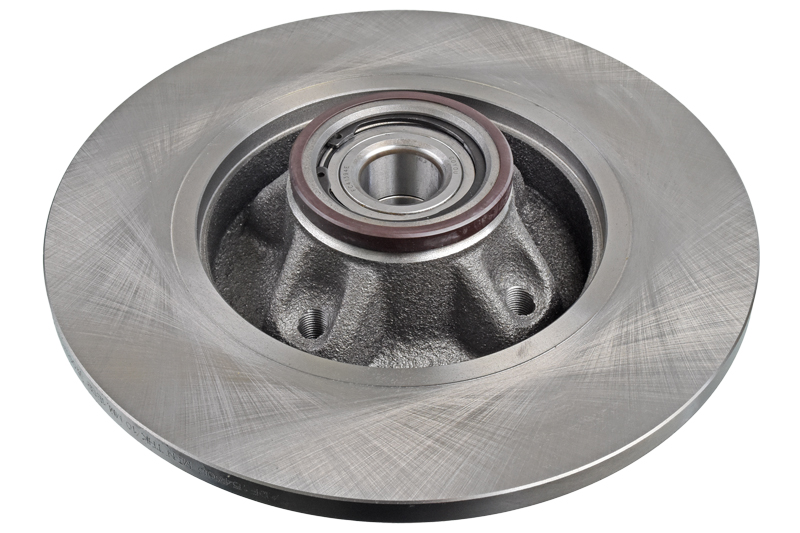
Blue Print advises technicians on integrated wheel baring and directional vented discs and highlight the important role that brake disc design has on safety.
Rear brake disc with wheel bearing
Blue Print part numbers ADP154305, ADP154351, to fit various Peugeot, Citroën and DS models.
Many Peugeot, Citroën and DS models are equipped with rear brake discs that have an integrated wheel bearing. As a result, this type of assembly allows for significant weight saving, since the brake disc also becomes the wheel hub. This pre-assembled part also makes replacement quicker and easier for the workshop, whilst eliminating the risk of mounting a bearing with incorrect clearance or seal positioning.
However, care must be taken when fitting this type of brake disc to the stub axle as this disc/bearing assembly is also fitted with a multipole reluctor for the wheel speed sensor.
With the old brake disc removed from the vehicle, the wheel speed sensor should be inspected for excess corrosion surrounding the mounting area.It is important to note that any excess metal corrosion can alter the position of the sensor – affecting its functionality.
This can lead to direct contact with the reluctor, causing damage to the new brake disc assembly (Fig.1). Subsequently, an increased air gap between the sensor and the reluctor can also occur, resulting in an anti-lock brake system fault – logged as a sensor implausibility signal fault code in the brake control unit.
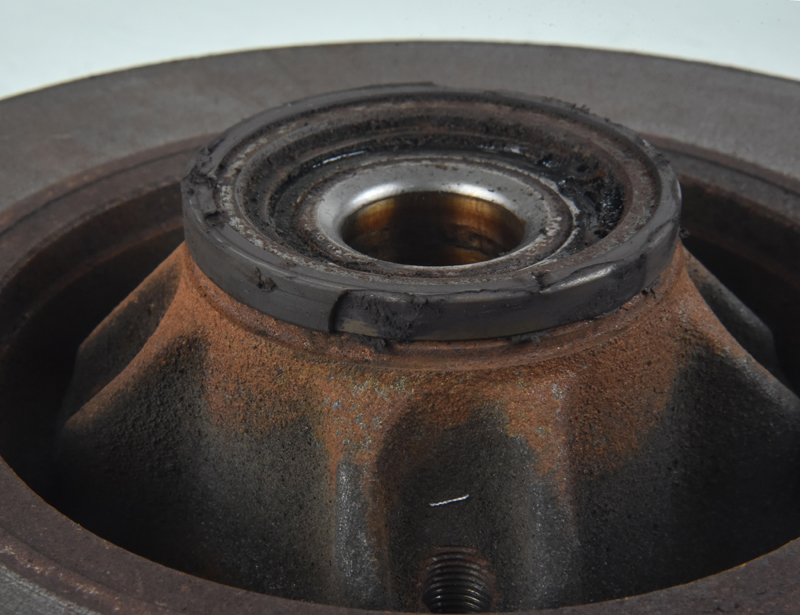
Therefore, during the installation of a new brake disc it should be identified if the speed sensor is in contact with the multipole reluctor, or if the air gap is not correctly aligned. If discovered to be incorrect, the brake disc and speed sensor should be removed. The sensor seating location should be cleaned of corrosion and – if damaged – the sensor refitted or replaced. With the new brake disc re-installed, and the sensor correctly aligned, a clear 1-2mm air gap between the reluctor and the sensor will be visible (Fig.2).

Directional vented brake discs
Brake disc design is more than skin deep and the internal layout and construction of vented brake discs is particularly important for temperature control.
There are many design variations of the vented section to maximise the cooling effect, which include pillar, column and curved column cooling vanes. These designs allow the brake disc to draw in air through the casting to dissipate heat, faster than is possible with a solid brake disc.
Directional brake discs are designed with angled cooling vanes to maximise this cooling effect. They are more commonly fitted to high performance models and it is important to ensure the original braking specification is maintained by using the correct specification parts, fitted in the right way.
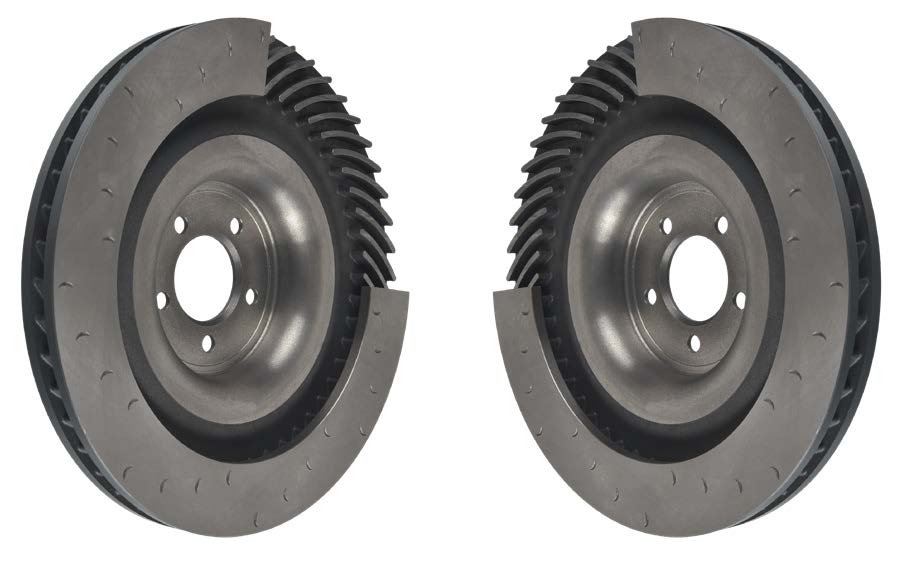
Each brake disc must be installed onto the correct side of each axle, with the vanes curved rearwards from the hub to enable air to be pulled into the centre of the hub, which enables this feature to function appropriately.
Each Blue Print brake disc with this ventilation feature has a different part number denoting the left hand or right hand brake disc and is individually packed.
However, to improve identification before fitting, the outer periphery of the disc and the box label are marked with a‘LH’ or ‘RH’ indicating the left hand or right hand of the vehicle, when viewed from the driver’s seat, in order to assist with an error-free fitment.

